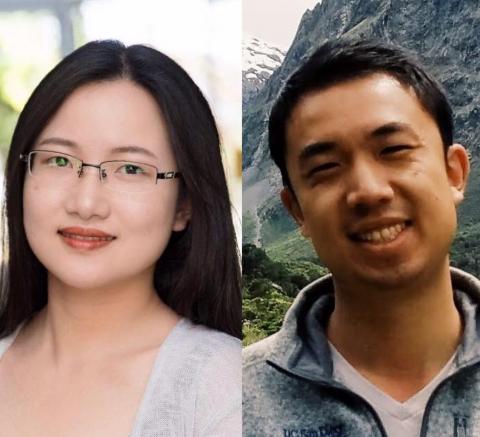Theodore Goodson, III
Richard Barry Bernstein Professor of Chemistry
University of Michigan
Seminar Information

The development of new sensitive methods for the detailed collection of conformational and morphological information about amyloids is critical to elucidating questions regarding the aggregation processes in neurodegenerative diseases. The combined approach of two-photon and time-resolved fluorescence spectroscopy described in this talk interrogates the early conformational dynamics seen in soluble oligomers of amyloid-β 1-42. A new approach implementing a nonlinear optical method to examine the conformational dynamics will be discussed. The sensitivity of the two-photon methodology was subsequently compared to circular dichroism spectroscopy. Other peptide interactions investigated by this methodology will also be discussed.
Theodore Goodson III received his B. A. in 1991 from Wabash College and earned his Ph.D. in Chemistry at the University of Nebraska-Lincoln in 1996. After postdoctoral positions at the University of Chicago and at the University of Oxford, he accepted a position as Assistant Professor of Chemistry at Wayne State University in 1998. In 2004 he moved to the University of Michigan as Professor of Chemistry. In 2008 he was appointed as the Richard Barry Bernstein Professor of Chemistry at the University of Michigan. Dr. Goodson's research centers on the investigation of nonlinear optical and energy transfer in organic multi-chromophore systems for particular optical and electronic applications. His research has been translated in to technology in the areas of two-photon organic materials for eye and sensor protection, large dielectric and energy storage effects in organic macromolecular materials, and the detection of energetic (explosive) devices by nonlinear optical methods. He has investigated new quantum optical effects in organic systems which have applications in discrete communication systems and sensing. Goodson's lab was also the first to investigate the fundamental excitations in small metal topologies which are now candidates for tissue and other biological imaging. In 2009 he founded Wolverine Energy Solutions and Technologies Inc. a start-up company with contracts to produce high energy density capacitors for military, automotive, and medical devices. The company also developed a new system for the detection of IED's remotely with one of the patents award Goodson at the U of Michigan.
Dr. Goodson's awards include the 2014 ACS Fellowship Award, Percy Julian Award, University of Michigan Distinguished Faculty Achievement Award, Lloyd Ferguson Lectureship, National Science Foundation American Innovation Fellowship, Sigma Xi Lectureship, Research Young Investigator Award, National Science Foundation CAREER Award, Alfred P. Sloan Research Fellowship, Camille Dreyfus Teacher-Scholar Award, Lloyd Ferguson Young Scientist Award, Burroughs Welcome Fund Award, American Chemical Society Minority Mentorship Award, University Faculty Recognition Award, College of Science Teaching Award, and a National Academy of Sciences Ford Postdoctoral Fellowship, American Association for the Advancement of Science Fellow. Dr. Goodson has been a Senior Editor for The Journal of Physical Chemistry since 2007. Professor Goodson has been an active member of both the undergraduate admissions committee and recruiting committees for the University of Michigan and also serves with the college to enhance efforts of mentoring through-out the university in particular for mentoring students of diverse backgrounds. He has served on the Committee of Institutional Cooperation and the Editorial Advisory Board of the Journal of the American Chemical Society. Dr. Goodson has published over 110 scientific publications and more than 140 invited talks.
